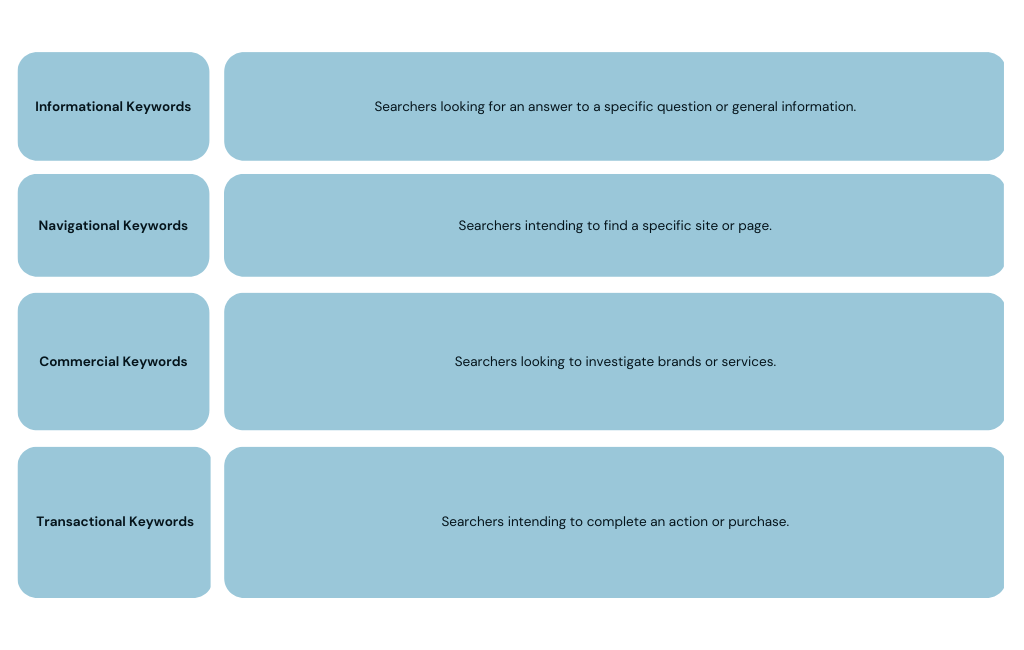Search engine optimization (SEO) is a key element of digital marketing. You might know that an effective SEO strategy involves optimizing your website to improve its rank in search engine results. But did you know that there are four types of SEO?
If you’re new to SEO, consider starting with our primer, What is SEO marketing for beginners? If you’ve mastered the basics and are ready to dig deeper, you’re in the right place. Let’s dig into the four types of search engine optimization.
Search engine optimization can be broken down into four categories:
The most effective SEO marketing strategies use all four types in tandem. Let’s take a look at how each SEO technique helps you get more qualified traffic to your website and build your brand.
On-page SEO includes the SEO tactic you probably think of first when you hear “SEO.” It starts with high-quality content. Typically a blog post, high quality content helps position your brand as an industry leader. Search engine algorithms are more sophisticated than ever, and Google gets better at recognizing truly valuable content with every update. The days of tricking search engines with black hat SEO techniques are dead and buried (RIP). If you want to show up in a search result, practicing white hat seo techniques is key.
What is high quality content? You’re on the right track with your content if it:
High quality content is also easy to read. Think proper grammar, short sentences, numbered lists, scannable headers, and credible outbound links.
Your focus keyword and closely-related keywords should appear in all the following areas:
Including your keyword shouldn’t be difficult or unnatural. If you’ve created a focused, high-quality piece, it should happen almost organically. But it’s important to review all these elements before finalizing your content to ensure it’s optimized.
How do you decide which keywords to focus your content around? Ask yourself: What would a users search intent be if they were looking for this content? What types of keywords would they use – informational, navigational, commercial, or transactional?

Here are a few tips for researching keywords :
You can spend all day talking about how great your own content is. But there’s a reason why 82% of consumers trust reviews , and only 4% trust ads – credibility.
Search engines look for signs that other users have found your content helpful: backlinks (links from external sites). For this reason, creating linkable content is the foundation of off page SEO.
Wait. What’s the difference between high quality content and linkable content? If your content meets the quality indicators above, you’re halfway there. But as Barbra Streisand lamented, “being good isn’t good enough” when you’re trying to get to the top of the SERP.
Linkable SEO content has been specifically crafted to attract attention and – you guessed it – earn backlinks. It might include:
Once you’ve crafted your high-quality, linkable content… you’re not done yet. Your content will likely earn some backlinks just because it’s amazing (like you). But to get the most out of the content you worked so hard on, you should try to get as many backlinks as you can.
Link building isn't just about having great SEO content. To get more backlinks, identify trustworthy, popular sites within your space. Track down who’s responsible for their digital content, and craft an email. Ask them to consider linking to your content. Include a summary, how it benefits their readers, and where the link could go. Be specific, including the anchor text (the text that links to your content) you’d prefer them to use.
After keyword optimization, technical SEO is probably the next thing that comes to mind when you hear SEO. To make the most of your content, it’s important to make sure your website meets modern technical requirements. That means optimizing elements like:
These components are important to search engine algorithms because they impact accessibility and user experience. Your content might be brimming with unique insights… but if it takes 90 seconds to load, most users won’t stick around to find out.
Run a SEO analysis and make sure you’re following web design best practices. Your topics and audience should be clear. Simplify your site structure as much as possible to focus on the essentials. To get a sense of technical performance, run your site through Google’s PageSpeed Insights tool .
The fourth type of SEO is local SEO . This area doesn’t apply to all businesses, but it’s could benefit a small business or any business that serves customers in a particular geographic area. The most important factors in local SEO are proximity, relevance, and prominence.
In general, improving the first three types of SEO will help boost your brand in local SEO results as well. You’ll want to focus on these particular areas:
Optimizing for local SEO can lower your content marketing expenses since it allows you to focus on targeted geographic areas.
There’s a lot to learn when it comes to SEO in marketing , and there are specialists in each of these four categories. So what’s the most important lesson here?
In the end, SEO strategy is all about the user experience. As search engines become more sophisticated, the gap closes between what’s prioritized by the algorithm and what’s helpful to the user.
When it comes to SEO best practices, the most important is making sure your website is easy to use and meets your audience’s expectations. Keeping your customers top of mind is a north star that won’t steer you wrong as you navigate the deep waters of SEO.